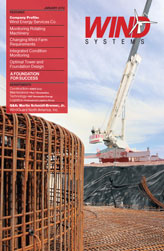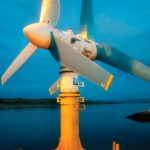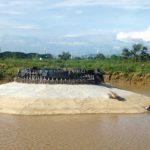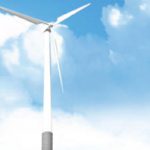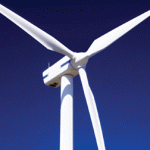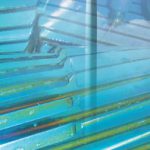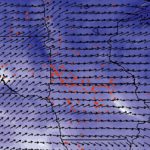Condition-based monitoring has been proven to provide significant cost savings in many industrial applications employing rotating equipment, including wind energy. It leads to high availability, low O&M costs, and a lower overall cost of energy. Condition monitoring systems take the surprise elements out of the actual operation by providing a view on what is actually happening inside, especially when it comes to large wind energy converters (WEC) or offshore turbines. By being able to accurately determine parts that are soon going to fail, maintenance can be planned much more effectively.
Eliminating Guesswork
Wind turbine reliability today still causes major financial headaches for turbine owners and operators. O&M costs for a single large onshore turbine have been estimated to be approximately $7/kW/year, whereas these costs are estimated to surge to about $40/kW/year for offshore turbines. In total these costs can represent about 10 percent of the total cost of energy for onshore turbines, and up to 35 percent for offshore turbines.
Failures can affect all of a wind turbine’s subsystems, with varying consequences and costs arising from downtime and repairs. In the case of most failures, damage accumulates slowly during operation. Continuous monitoring allows turbine operators to intervene at an early stage and minimize any further damage or lost availability.
Automated Measurements
Condition monitoring has been used for various rotating machines for years with great success. Only during the past decade, however, has there been a movement to automate this work in order to get regular, accurate vibration measurements that help operators understand whether their wind turbine components are in good condition or whether they are soon going to fail. This has helped operators schedule service in advance, eliminating total failures, keeping downtime to a minimum, and saving unnecessary costs.
Condition monitoring systems today are not able to say that a given component will fail for sure, nor can they prevent a failure. However, once a certain level of vibration is reached then it’s easy to predict when a component will fail. Operators can recognize vibration patterns, for example, when teeth are broken on a gearbox. Although they cannot eliminate the failure of the gearbox, they can proactively reduce the damage that the broken teeth cause to the gearbox and possibly other equipment. They can reduce the operational speed or take other measures to keep the turbine up and producing a lower amount of energy.
Early Warning
Most online condition monitoring systems with fault detection algorithms allow early warning of electrical and mechanical defects to eliminate the risk of complete component failure. Effects on auxiliary equipment can be prevented as well. This allows necessary maintenance activities to be scheduled well in advance, avoiding difficulties with bad weather or the lack of in-stock parts.
Condition monitoring can even show indications of extreme external weather conditions, such as icing or wave-induced tower oscillation in the case of offshore wind turbines. This saves in overall maintenance costs, reduces downtime, and significantly lengthens intervals between maintenance, as well as the overall lifetime of the WEC itself.
Preventing Downtime
The aim of any condition monitoring system is to understand as comprehensively as possible the status of a wind turbine at any given moment. It is not possible to predict the future, but it is possible to prevent many failures in advance with the support of condition monitoring systems.
When operating a wind turbine, three main maintenance strategies are most typical. These include corrective maintenance, scheduled maintenance, and condition-based maintenance. With corrective maintenance no action is taken until something breaks, which can be highly risky. Scheduled maintenance takes a more preventive approach by changing parts that could potentially be worn out. This strategy helps eliminate risks but is very costly, as parts that could still have considerable operational lifetime may be changed too frequently.
Condition-based monitoring using a condition monitoring system is the strategy that finds the optimum point between corrective and scheduled maintenance strategies. By having information from an advanced data mining algorithm that indicates just how bad a given component really is, operators can make a much more informed decision of whether that component can run until the next scheduled maintenance or not.
Integrated Monitoring
Condition monitoring generally works using a series of vibration sensors on the main bearings, gearboxes, generators, and other key components, sending vibration signals to a monitoring station which can be located miles away. The drivetrain monitors measure surface accelerations as an indication if any part is wearing too quickly.
Vibration sensors are the most common tools used to measure the wear and tear on components. For example, these sensors can be used to measure the effect of bearing or gear wear on the drivetrain. AMSC’s wtCMS™ condition monitoring system is unique in that the condition monitoring capabilities are fully integrated within the wind turbine control system. This gives essential information about turbine operation modes directly to the main controller. No additional sensors are required, which results in a reduced total number of components and increased reliability in comparison to similar, non-integrated monitoring systems (Figure 1).
The wtCMS system provides wind park operators with virtually real-time information regarding the condition of selected sub-systems and components. It also features an automatic measurement system with online analysis and alarm generation. Communication all happens to the AMSC wtSCADA™ supervisory control and data acquisition system, which results in accurate vibration trend visualization for onsite and remote users.
The vibration signals alone don’t tell much, but trained operators can pick up on problems by observing trends over several days, weeks, or months, and they can then use the expertise gathered over the years by AMSC to make intelligent decisions about any necessary repair work required.
Ample Automation
Besides being highly integrated, the wtCMS system also offers the highest degree of automation. This set of tools can monitor a large set of data automatically, which is another specific advantage for wind park operators because they can count on AMSC’s years of experience and knowledge database to bring them automatically analyzed data cheaper and more quickly.
AMSC’s wtCMS consists of a core CMS processor module that receives and processes measurement signals. A condition monitoring module enables input for up to nine analog signals from accelerometers, plus three additional channels. It also allows input of additional signals and variables from the main controller.
The wtCMS cabinet contains the heating element, cooling ventilator, and thermostats for environmental control, power supply, and electronics protection. Instrumentation includes general-purpose accelerometers, low frequency accelerometers, and accelerometer connection cables. The entire system operates reliably in an exceptionally wide temperature range from -45°C to +60°C.
Vibration Sources
Sources of vibration are numerous on a WEC. Failures can affect all of the sub-systems, but the downtime and repair costs of the failure rates differ dramatically. For example, the electrical system typically experiences a high rate of failures annually, but is relatively quick to repair. In comparison, the drivetrain does not fail often, but when it does downtime can be considerably long if the replacement components must be manufactured from scratch and shipped then to the wind park site (Figure 2). Other sources of vibration can be the tower oscillations, yaw movement, oil pumps, generator defects, the power converter, or the mechanical feedback coupling from line voltage variations (Figure 3).
Examples of just a few of the signal patterns captured automatically in the integrated wtCMS system indicate shaft unbalance, misalignment, mechanical looseness, damaged gear teeth, or wear in any bearing parts. In total, wtCMS is able to detect more than 30 different signal patterns, and the list is constantly growing.
Data Management
The AMSC wtCMS system offers ease of use for every wind turbine operator. Data can be accessed quickly to make well-informed decisions. All results from the wtCMS are communicated directly to the wtSCADA system (Figure 4). The fully integrated systems allow results visualization and comparison with overall WEC performance. A high degree of advanced automated analysis and intelligent software algorithms minimize the amount of effort needed to reach the right conclusion.
In addition, the advanced data-mining algorithms from AMSC enable accurate analysis and long-term trends. The single user interface for wtSCADA and wtCMS provide easy and automatic evaluation of results from the analysis and visualization. The benefits of an integrated condition monitoring system are clear: an early indication of system damage allows optimal performance, cost efficiency, and the highest reliability from each turbine. The wtCMS can even be configured to monitor specific frequencies of interest for each type of WEC.
CMS Outlook
Development plans at AMSC are ambitious when it comes to creating the next generation of condition monitoring systems to further enhance the reliability and uptime of wind turbines. AMSC was one of the first companies to offer automated solutions for wind turbines. To date we have delivered more than 650 condition monitoring systems since launching them to the market as part of our portfolio in 2005. Our development plans are to continue to expand our range of monitoring tools for all critical parts of a WEC that are subject to deterioration. This would include the electrical components and blades, for example.
In the future, any kind of sensor could be used as part of the CMS strategy, and not just vibration-based sensor systems. Plans even call for developing a condition monitoring system that is self-contained. This means it could be run by trained personnel, but would not require specialists for the result interpretation. This next generation would use all of the competencies within AMSC to provide a system in an algorithm form that works automatically on all available data.
For example, the converter currently features its own diagnostics system that sends information to the turbine control regarding immediate failures. AMSC plans to use the converter’s diagnostic system to help detect failure as part of the CMS in the future. This would enable the converter to not only diagnose itself, but also all surrounding electrical systems as well. AMSC has the data needed to put this into an algorithm and turn the converter from a reactive component into a proactive one for greater reliability.
Summary
Again, the goal in the future is to continue to minimize the efforts needed from operators through the use of intelligent software algorithms and automated analysis. AMSC’s customers benefit from these continuous software improvements, and we’re now developing additional measurement systems for advanced monitoring that will be integrated into our existing platform. We want to do all we can to make sure wind turbines are reliable, and that they have the lowest possible risk of failure, minimized maintenance costs, and high availability.



















